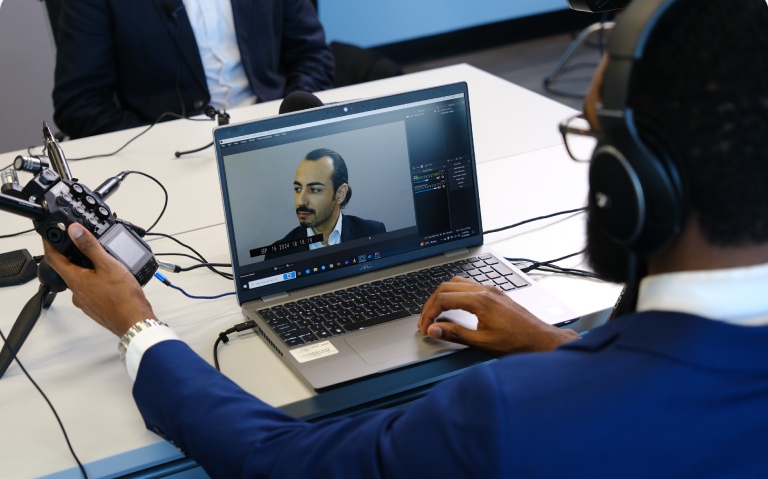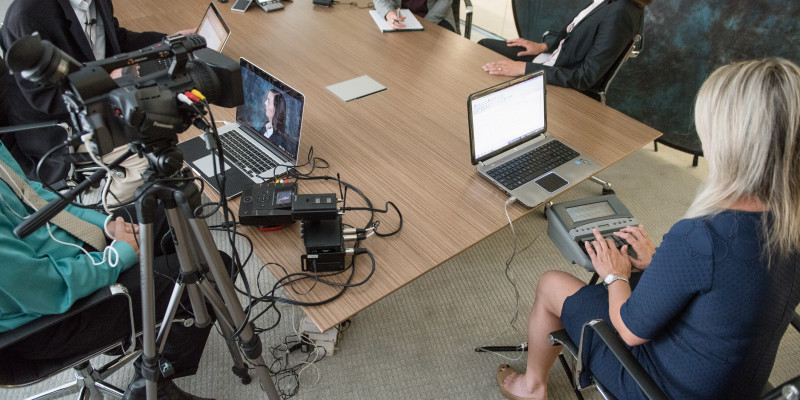Why Legal Videography Is Crucial for Accurate Court Recordings
The role of legal videography in courtroom setups can not be overemphasized, as it acts as a necessary device for protecting the integrity of court documents. By catching both verbal and non-verbal interaction, it boosts the clearness of witness testimonies and mirrors the subtleties of courtroom communications. This detailed paperwork not only help in decreasing potential misconceptions however additionally sustains appellate reviews, therefore strengthening the judicial process. Nonetheless, the ramifications of integrating lawful videography into basic court room methods raise vital concerns about its more comprehensive effect on the legal system. What might these ramifications require?
Value of Visual Evidence
In the realm of lawful procedures, the value of visual evidence can not be overemphasized. Visual evidence acts as a powerful device in developing facts, corroborating testaments, and improving the overall quality of a situation. This kind of evidence, that includes pictures, video clips, and diagrams, can provide a concrete context that verbal summaries usually lack, thereby providing juries and judges a clearer understanding of the scenarios bordering a situation.
Additionally, aesthetic proof help in the retention of details. Human cognition is naturally aesthetic, and individuals are most likely to bear in mind and understand details offered in an aesthetic layout. In the court room, this can be crucial, as compelling aesthetic proof can guide point of views and enhance the story offered by lawful reps.
Furthermore, using visual evidence can decrease misconceptions and uncertainties that commonly develop from verbal exchanges. By providing a straight depiction of events, visual proof aids to get rid of subjective interpretations and fosters a more unbiased assessment of the truths. As a result, the integration of visual proof into legal proceedings not just enhances the stability of the judicial process but additionally boosts the probability of accomplishing a just outcome.
Capturing Non-Verbal Hints
Utilizing advanced videography strategies can considerably improve the capture of non-verbal signs during lawful proceedings. Non-verbal communication, consisting of faces, body language, and eye contact, plays an essential role in conveying feelings and objectives that may not be explicitly mentioned in spoken statement. legal videography. Legal videography uses high-definition cameras and critical angles to make certain that these subtle signs are tape-recorded with quality and precision
The capacity to evaluate non-verbal behavior can supply valuable context to declarations made during court sessions. A witness's reluctance or self-confidence can be interpreted via their position or motions, possibly affecting the jury's understanding of integrity. The usage of close-up shots can aid focus on a speaker's expressions, allowing for a much more nuanced understanding of the testament.
Furthermore, integrating multiple video camera angles can develop a thorough view of communications, highlighting characteristics in between parties included. This diverse technique not just boosts the precision of the court record however likewise aids in protecting the honesty of the judicial procedure - legal videography. Ultimately, catching non-verbal cues with lawful videography promotes a richer, extra complete representation of court procedures

Enhancing Testimony Reliability
The reliability of testament can be dramatically boosted via using high-quality lawful videography. Video recordings act as an objective tool that captures not only the talked words of witnesses however additionally the nuances of their distribution, including tone, pacing, and psychological expressiveness. This diverse documentation supplies a clearer understanding of the witness's reputation and objectives, which can be pivotal in lawful proceedings.
Additionally, lawful videography lessens the capacity for misinterpretations that might arise from created transcripts alone. When jurors can observe a witness's temperament and body language along with their testimony, they are much better furnished to assess the authenticity and integrity of the evidence offered. This visual context can enhance the testimonial narrative, making it more compelling and trustworthy.
Additionally, the existence of a video clip recording can discourage possible variances in testimony. Witnesses may be extra cautious in their statements when they understand they are being videotaped, resulting in more exact and truthful accounts. Generally, high-grade lawful videography enhances the integrity of statement, ensuring that the court has access to a complete and sincere find this depiction of the truths as shared by the witnesses.
Sustaining Appeals and Reviews
Lawful videography plays a crucial function in supporting allures and reviews by offering a thorough aesthetic document of courtroom proceedings. This visual documentation catches not only the talked words of witnesses and lawyers but also the subtleties of body language, tone of voice, and courtroom dynamics. Such elements can be essential in comprehending the context of testimonies and debates presented.
In the appellate process, where the focus gets on mistakes of law and procedural fairness, a check my site video record can work as a crucial tool for appellate courts. It allows judges to review the initial test context, making certain that decisions are based on a complete understanding of the process. The capability to visually evaluate the demeanor of witnesses or the communications between events can disclose understandings that written records might ignore.

Additionally, lawful videography can aid in making clear uncertainties in testimonies or step-by-step judgments, consequently strengthening the basis for a charm. By offering a dependable, unbiased account of what transpired in court, legal videography not just supports the honesty of the legal process yet likewise encourages all parties included to make informed decisions concerning their cases.
Enhancing Courtroom Processes
Enhancing court performance, lawful videography streamlines processes by supplying prompt accessibility to visual records of procedures. This modern technology permits courts, lawyers, and courts to revisit vital statement and proof, making certain that all parties have a clear understanding of the case. By capturing the nuances of verbal and non-verbal interaction, videography enhances the document, making it less complicated to realize the context and weight of testaments.

Additionally, video clip recordings can assist in remote participation in hearings, permitting better versatility in scheduling and involvement, which is particularly beneficial in complicated cases involving several stakeholders.
Conclusion
Finally, lawful videography plays an important duty in making sure accurate court recordings by giving crucial visual proof that catches both verbal and non-verbal interaction. This practice boosts the reliability of testimonies, sustains appellate evaluations, and streamlines court procedures. By promoting a thorough understanding of court characteristics, legal videography eventually adds to much more fair judicial results, strengthening the honesty of the legal system and facilitating educated decision-making.